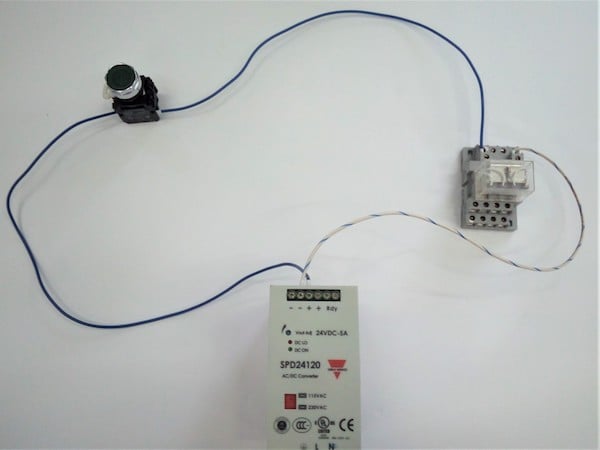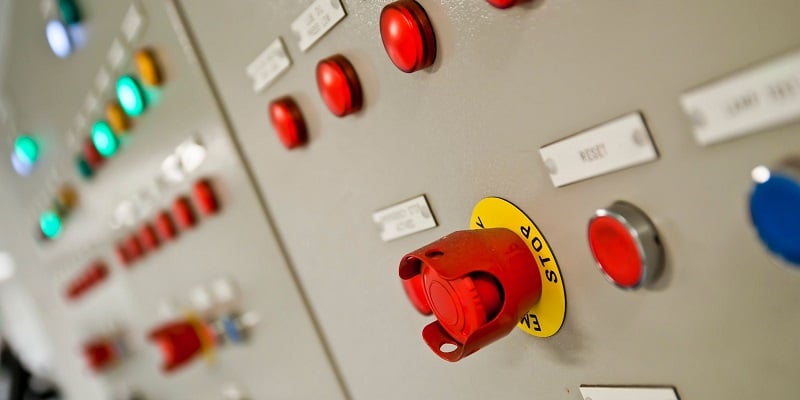Understanding Differences Between Power and Ground Side Switching
Learn about power side and ground side switching and how designing these circuits to have predictable failures from the beginning helps in system maintenance and troubleshooting.
It’s not unusual for electrical systems to fail. In fact, failure is probably almost guaranteed at some point. Too often, we focus on one element of managing the risk: the repair. Design the system to be repaired and replaced as quickly as possible, returning to full operation. But there is another often overlooked element: designing the circuits to have the right kind of failures from the beginning. Understanding the result of ground-side switching can help with this situation.
The Role of Circuit Components in Power Side and Ground Side Switching
A circuit always consists of four main elements:
- The power supply, which has a supply and a return (true in AC and DC)
- The control devices like buttons, switches, and sensors
- Conductors, mostly wires
- Load devices that control the amount of current in a circuit or branch.
The final component in this list, the load devices, are the main point of consideration in the conversation of power or ground side switching.
As the name suggests, power side switching places the switches (controls) on the side of the load closer to power, or before the load.

Figure 1. The schematic of a circuit following a power side switching strategy. The switch is closer to the power side of the supply.
Ground side switching places the control devices after the load, or closer to ground.

Figure 2. The schematic of a circuit following a ground side switching strategy. The switch is closer to the negative side of the supply. In an AC circuit, this might be the neutral side.
Failure Modes
Short Circuit Failure
Depending on where a short occurs in a circuit will dictate the response. If a wire is placed before the load and it comes loose, the result will be a short directly from power to ground if a path is established. This path might be instant, or it might first require a contact being closed.

Figure 3. A picture of a circuit following the power side switching strategy. The placement of the components matches the schematic in Figure 1.
Regardless of when it occurs, the instant it happens, there will be a massive spike in current which should cause a fuse to blow or breaker to trip. These safety devices are used for exactly this reason.
Latched Closed Circuit
If the wire comes loose after the load device, there will still be a short to ground, but current must now travel through the load device, so it will instantly turn on as if latched. This will not cause an excessive amount of current, since the breakers and fuses should normally allow plenty of current flow for that load device to be active.

Figure 4. A picture of a circuit following the ground side switching strategy. The placement of the components matches the schematic in Figure 2.
Turning on the load wouldn’t be considered ‘unusual’ behavior. Although just like before, the failure may be instant, or it may cause a contact to be closed first.
Switch Placement: Is Switch Location Important?
We must first identify what should happen in the case of a failure in order to determine the right type of switching to use. A blown fuse or breaker would cause the entire circuit to turn off, so that no load devices supplied by that fuse/breaker will work until the problem is solved. If there are safety risks, like a machine that can go out of control and hurt people, it might be preferable to shut everything down in the case of a problem. When the control devices are placed on the power side, there will be more wires, and therefore more likely failure points, to cause direct shorts to ground.
On the other hand, the load device might be an alarm or a red indicator light. In the case of failure here, it might be preferable to latch it energized. Then the problem can be immediately noticed and solved.

Figure 5. If the load device is an alarm or a red indicator light, it might be preferable to latch it energized. Image used courtesy of Canva
If an overcurrent causes a breaker to trip and the alarm indicator cannot sound, the failure may not be noticed until later. Ground side switching with the control devices closer to ground places more wires after the load, and therefore it is more likely that a connection failure will occur here after the load.
Sometimes the load device may be a piece of medical equipment (medical or emergency vehicle applications). For many devices, it may be preferred that the equipment simply keep running energized until the problem is solved. The alternative may mean that the entire circuit is disabled until fixed, and this can be catastrophic. Imagine a broken wire blowing a fuse for life support equipment in an ambulance on the way to the hospital. Obviously, a preferred situation is to keep the equipment running, even if wastefully, until the trip is over and the problem is fixed.
Power and Ground Side Switching in Alternating Current Applications
Perhaps the terminology of power and ground are most common in DC applications, but the concept still applies to AC.
Imagine a residential 110 vAC light circuit. Usually, the switch is placed on the ‘hot’ side of the light, the black wire incoming to the light fixture is either supplied or cut off. If the switch is turned off, the fixture could be replaced without fear of accidentally shorting out the wire.
However, if the switch must be replaced, extreme care must be taken not to create a short, or the breaker would trip (in reality, the breaker should be turned off before working on the circuit). Energy from the hot wire is supplied directly to this switch, so touching this wire or the neutral to any grounded component would bypass the light fixture and create a spark and short.
Consider now moving the switch to the neutral side of the light fixture, the white wire. Obviously, you should still remove power at the breaker, but if not, a failure might not be as dangerous. If either of the wires attached to the switch were to accidentally touch ground, it would travel through the light fixture on its way to ground, so the light would turn on. You could see that error and immediately remove the wire, but without fear of a dangerous spark or excessive current.
Once again, this is an example only—you should always make the situation safe in any circuit before removing and replacing components. However, the situation does show the difference between power and ground switching in an AC application.
Should Control Devices Use Power or Ground Side Switching?
The difference between power and ground switching lies in the location of the control devices, either closer to power, or to ground, respectively. Power switching will more likely result in the tripping of a breaker or fused device. Ground switching will more likely result in a latching of the load device in an energized state.
There is no absolute guarantee that these results will be seen in failure cases, but at least we can sway the odds.
Want to learn more about grounding and power in control systems? We have plenty more!
- Fundamentals of Grounding in Automation Control Systems
- The Importance of Grounding Equipment for Safety
- Grounding for Control Transformers
- Grounding DC Power Supplies
- Negative Effects of Grounding (Earthing) a DC Power Supply
- The Difference Between Ground and Neutral Conductors in Control Wiring
- The Importance of Neutral Wire in 3-Phase Systems







How does ground side (neutral) motor control circuit switching square with NFPA NEC 430.74? Consider a typical control circuit wherein the Hot conductor leaves the controller enclosure, runs to a remote start station, and returns to the enclosure either to the starter coil then OL device or to the OL device then starter coil. In this circuit a grounded conductor either trips the short circuit / overcurrent device instantly or when the start circuit is enabled, depending on which conductor is grounded. In either case the motor does not start. The value of not preventing an orderly shutdown, alarm signaling, etc. is clear. However, 430.74 would seem to allow ground side switching only if there are no remote stations. I am, of course, referring to US installations only.